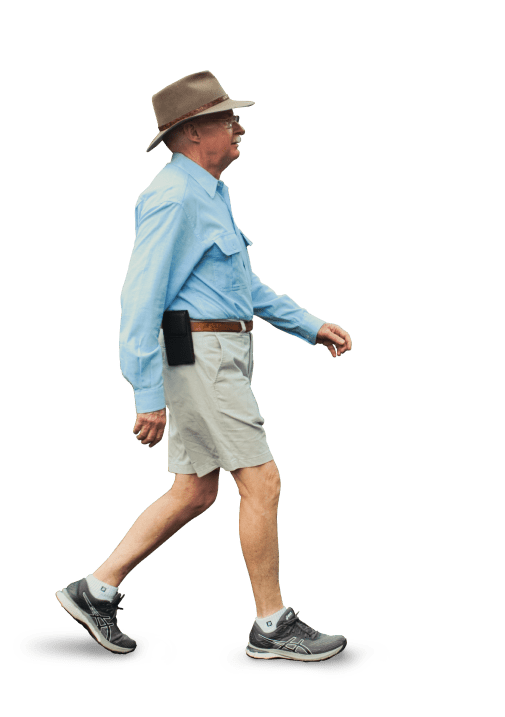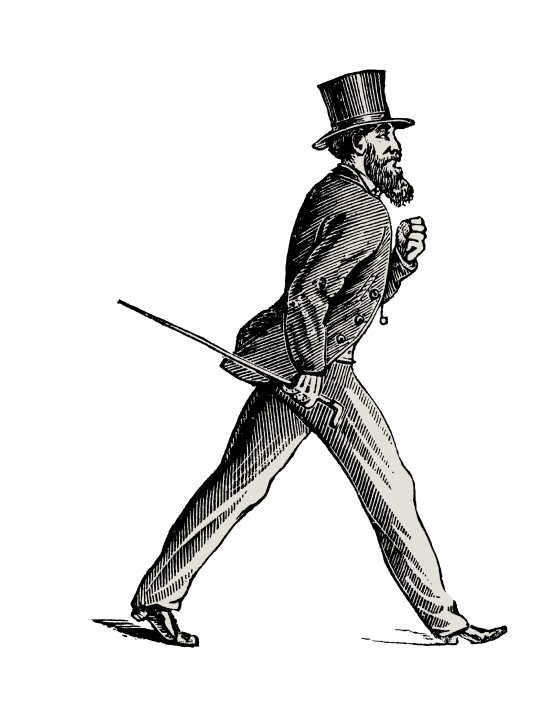

Step into Brisbane’s History
SELF-GUIDED WALKING TOURS DEPARTING GOVERNMENT HOUSE

About the walks and Professor Graeme Nimmo
Professor Nimmo, a proud fourth-generation Queenslander, brings a deep connection to Brisbane’s inner-western suburbs, shaped by his childhood in Ashgrove and lifelong ties to the area. Stepping Out From Fernberg draws on Professor Nimmo’s personal memories and meticulous research skills, courtesy of his distinguished career in medicine, to illuminate the unique history, geography, and cultural heritage of this unique pocket of Brisbane. From its early days as the home of the Turrbal and Jagera people to its transformation into a vibrant, leafy suburban landscape, it captures the essence of the area’s evolution. Professor Nimmo invites readers on an ambulatory journey of the inner west’s rich past and scenic terrain, celebrating its enduring charm and significance along the way.
Government House, or Fernberg, has gazed out over inner-western Brisbane since its initial construction as a suburban villa in 1865. Several extensions in grand Italianate style lend it a striking appearance suited to the Vice-Regal function it has fulfilled since 1909. The grounds retain an important remnant of native bush that provides sanctuary to a wide variety of wildlife. I have early reminiscences of this estate as my paternal grandparents owned a workers’ cottage at 4 Rainworth Road from which they and my father looked across at the Government House horse paddock from the 1920s to the 1950s. Much has changed in the intervening years.
Brisbane, long dismissed by its then more affluent southern counterparts as a big country town, has progressively embraced more tightly its beautiful riverine environment and provided enhanced access to the serpentine banks of its broad, eponymous river, called Maiwar in the Yuggera language of its longtime custodians, as well as to its suburban creeks. The city, now frequently referred to as the ‘river city’, occupies a variety of landforms, some relatively flat, like the CBD and South Brisbane largely built on flood plains. Away from the river, Brisbane tends to be hilly, with some districts graced by gently rolling slopes while others, such as the subject of this account, are more deeply folded with high ridges and steep intervening valleys and gullies. This terrain makes for interesting if sometimes strenuous walking with new and interesting views at almost every turn.
The inner-western suburbs have an important place in the story of the modern city. They now comprise Red Hill, Paddington, Milton, Auchenflower, Toowong, Bardon, and Ashgrove. While some older suburbs and neighbourhoods have been officially subsumed into these, such as Rosalie into Paddington, Jubilee into Bardon, Torwood into Auchenflower, Ithaca into Red Hill, and St Johns Wood into Ashgrove, most of their names are still in common use. This area was the backdrop to most of my childhood and my recent return to its delightful suburban landscape has rekindled an interest that I shall endeavour to satisfy with an ambulatory exploration of some of its history and topography.
Geologically speaking, Brisbane sits in the ancient South-East Queensland Volcanic and Plutonic Province dating back more than 200 million years. The drainage pattern that resulted in its river is likely to have been established approximately 20 million years ago.1 The underlying rock is granitic, shallowest at Mt Coot-tha, overlaid by phyllite.2 The area concerning us consists of a series of steep ridges with intervening deep gullies. The major ridges have determined the course of roads such that one follows Birdwood Terrace. Another follows Given Terrace, Latrobe Terrace, MacGregor Terrace, Simpsons Road, and Stuartholme Road, and yet another Musgrave Road, Waterworks Road, Coopers Camp Road, Davies Road, and Barnett Road. Close to the river, the land is drained by three short water courses, which become apparent during floods, into Ithaca Creek and Enoggera Creek.
Most of the original open eucalypt forest has been replaced by suburbia but for that which remains at Fernberg and in the foothills of Mt Coot-tha. Revegetation of Ithaca and Enoggera Creeks has also provided corridors of native trees and shrubs including rainforest species that I assume would have originally thrived in the deep gullies and water courses. Additionally, the area is blessed with numerous parks that now sport many more trees than I recall in my youth as indeed do the streets and suburban gardens. Therefore, it is not surprising that an abundance of birdlife thrives hereabouts along with native marsupials, reptiles, and frogs. The possums in particular appear quite well-upholstered, most notably those at Government House that have taken rather a shine to the roses and tibouchinas.
The district has been home for millennia to the Turrbal and Jagera people and one of the walks we shall undertake includes a well-attested pathway concerning the native bee dreaming. The early history of European settlement in the inner west saw the acquisition of large blocks of land by settlers of some means for the construction of substantial villas close to town. Some, most still extant, have lent their names to suburbs or streets. These include Auchenflower, Bardon House, Baroona, Fernberg, Glenlyon, Rainworth House and St Johns Wood House. Subsequent subdivision into suburban blocks of all but Fernberg saw the building over time of workers’ cottages, classic Queenslanders, Federation-style houses, Ashgrovians, post-war weatherboard houses, and more recently, brick houses and blocks of flats along with the schools, churches, shops, and other commercial and public buildings to give us the present varied streetscape inviting exploration.
1 Department of Resources, Geological Framework (compiled by I.W. Withnall and L.C. Cranfield)
2 Northern Link, Phase 2 – Detailed Feasibility Study, Chapter 6 Geology and Soils, September 2008